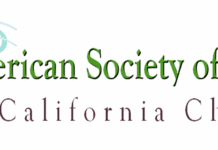Listen to the audio version of this article. (Generated by A.I.)
Earlier this year, the California Department of Pesticide Regulation (CDPR) finalized tighter restrictions on 1,3-Dichloropropene (1,3-D) specifically buffers zones and exclusion periods to keep workers and others away from 1,3-D applications. Buffer zones of 100 feet and exclusion periods of 48 hours are the typical requirements depending on fumigation method and crop type. This was done to protect nearby workers and others from the perceived risk of 1,3-D, which assumed that workers worked in an adjoining orchard 14 to 28 days next to a field that is fumigated with 1,3-D every year for 40 years.
Interestingly, this coincides with the first annual report for the previously adopted restrictions on 1,3-D. These regulations address 72-hour acute risk and 70-year lifetime cancer risk to residents and other non-occupational bystanders (adults and children) from 1,3-D. Known as Regulation 22-005, these requirements went into effect on Jan. 1, 2024. Using worst-case application scenarios, CDPR established requirements to minimize the release of 1,3-D in the air after its application in the soil. These mitigation measures include acreage limits, minimum setback distances from an occupied structure to a treated field, totally impermeable films, deeper fumigant injections, an increase in soil moisture requirements, quarterly use summaries and an annual report, among other requirements.
Now, pursuant to CDPR regulations, CDPR must prepare an annual report that evaluates the effectiveness of the 1,3-D regulations. The report identifies and evaluates the 10 highest-use townships in California and evaluates the air concentrations at all six of CDPR’s 1,3-D monitoring stations. This first annual report also checks compliance with the 1,3-D regional use limit (township cap) of 136,000 adjusted total pounds (ATP) temporarily in effect.
‘…the facts and science are on our side, and we need to be prepared to defend the continued use of these extremely valuable and necessary tools.’
Air Monitoring Data Supports Effectiveness of Mitigation Measures
Air concentrations that exceed a regulatory target concentration may indicate the need for additional mitigation measures. CDPR is also required to assess monitoring stations with measured air concentrations that exceed an “evaluation trigger”. The assessment includes monitoring stations for CDPR’s Air Monitoring Network (AMN). The evaluation triggers are more stringent than regulatory target concentrations and provide an additional margin of safety for CDPR to evaluate air monitoring data and consider the need for additional mitigation measures prior to exceeding a regulatory target concentration. If any of the modeled or monitored air concentrations are higher than expected in comparison to previous data, the report includes a description of action(s) CDPR will take to address the high levels and a timeline for taking the actions.
The townships identified and evaluated in this annual report represent the highest-use townships in each of the 10 counties with the highest 1,3-D use, based on the ATP. The report identifies key factors influencing usage levels and air concentrations within the specified townships and includes detailed modeling to estimate the maximum 1,3-D air concentrations over 24-hour, 72-hour and one-year averages. In 2024, 7,008,972 pounds of 1,3-D were used on 43,736 acres statewide, corresponding to 4,053,244 ATP and 1,296,684 pounds of emissions. This is the lowest 1,3-D use and acreage since 2009. The crops with the most use were almonds, strawberries, sweet potatoes and carrots.
Applications using field fumigation methods 1206 and 1210 (untarped, 18-inch minimum injection depth methods) largely transitioned to methods 1224 and 1226 (untarped, 24-inch minimum injection depth methods), resulting in a reduction in emissions following implementation of CDPR Regulation 22-005, especially in almonds. All townships complied with the township cap of 136,000 ATP, with the highest township having 113,628 ATP. Modeling results showed the highest estimated air concentrations were 26.8 ppb, 15.1 ppb and 0.41 ppb for the 24-hour, 72-hour and one-year time periods, respectively. These concentrations were below CDPR’s regulatory target concentrations of 55 ppb (72-hour average) and 0.56 ppb (70-year average). Additionally, the highest measured air concentrations at the monitoring stations were 7.19 ppb and 0.21 ppb for the 24-hour and 1-year time periods, respectively. These concentrations were below the thresholds of 55 ppb (24-hour average) and 0.27 ppb (1-year average) that trigger additional evaluation.
In summary, CDPR’s pesticide use report data analyses of high-use townships and ambient air concentrations from air monitoring stations within AMN indicate current regulatory measures are functioning as intended. In summing up the report, CDPR commented, “There is no evidence at this time to suggest that additional actions are necessary to meet regulatory goals of DPR Regulation 22-005.”
“There is no evidence at this time to suggest that additional actions are necessary to meet regulatory goals of DPR Regulation 22-005.”
– California Department of Pesticide Regulation
This follows the release of the results from CDPR’s air monitoring study conducted at three sites in Stanislaus County. This study conducted 58 ambient air measurements at three locations in Stanislaus County in Grayson, Hughson and Monterey Park Tract. None of the 58 measurements exceeded 4% of the regulatory thresholds. In response to these results, CDPR commented, “These findings suggest minimal risk from ambient air exposure to the monitored pesticides (1,3-D, MITC and chloropicrin) during the study period.”
The results of both reports clearly show there is no risk from the application of 1,3-D, and that the existing regulations are working. Nonetheless, we fully realize the scrutiny will not go away. But the facts and science are on our side, and we need to be prepared to defend the continued use of these extremely valuable and necessary tools.

By Roger A. Isom | President/CEO, Western Agricultural Processors Association
Roger is President/CEO of the California Cotton Ginners and Growers Association and Western Tree Nut Association. He brings over 30 years of regulatory and legislative advocacy experience, specializing in environmental and safety matters. Roger’s responsibilities include the management of both Associations’ staff and day-to-day operations. Roger is also the President of the Ag Energy Consumers Association (AECA), board member and Past President of the Ag One Foundation at California State University Fresno, and manages the Navel Orangeworm Action Committee (NOWAC).
















